“Continues is about setting emotional armor aside and allowing desires and dreams to be exposed.”
We’ve been intrigued by Dan Gatto’s Continues project since it was just a rumour, and have been tracking it intently as it’s grown from a split 7″, to a set at Kinetik, to a wonderful debut LP. As longtime BABYLAND fans we had innumerable questions to ask of Dan, and as expected, he had plenty of insight to offer about the transition from and differences between Continues and that legendary band, as well as how his turn towards synthpop happened.
ID:UD: If you’ll pardon the leading question, as soon as we heard it, the name Continues seemed to suggest the same commitment to soldiering forward with a very particular vision, regardless of reception, that BABYLAND’s slogan of “We Will Not Go Away” connoted (as well as the old video game trope of a “continue” offering a second chance at a mission). Can you take us through the dissolution of BABYLAND and how Continues coalesced as a project afterward?
Dan Gatto: Sure. In August 2009 BABYLAND were offered a US tour with Skinny Puppy. It was a great opportunity for us and I really wanted to do it. Unfortunately, my bandmate did not. It was the first time we had such a clear, up front conflict of opinion about the band, and two weeks later he quit the band for good. He informed me that he’d been unhappy with things for years. That was it. If it would have been up to me at the time, I would have done the tour and we’d still be making records and playing live as BABYLAND – but it didn’t work out that way.
Looking back – and even forward – the concept of “We Will Not Go Away” came from my heart. I used “We” to include others, but maybe I should have refined it. Even before BABYLAND, I have always had an intense connection with a core commitment to creation, the pursuit of dreams, new experiences. BABYLAND tackled the angry, frustrated, fearful and anxious side of that commitment. BABYLAND sought to rally the troops and harness the uncertainty I had – the idea that I wanted to have that pure hope, optimism – but I couldn’t find it.
So, what was next? What were my choices? What did I want? What do I want? What do I love? What is worth reaching for? What are my dreams? I am historically an extremely pessimistic, cynical person, but those states may be more of a subconscious way to protect myself from disappointment, hurt – loss. The negativity I hold and at times telegraph is the shell – it’s surface level. It’s an emotion that can easily be communicated – shared among others. It is understood and makes no demands of the other. There is no risk. No one is digging deep. Now Continues is more about setting that emotional armor aside and allowing desires and dreams to be exposed. It is a process I am only just implementing – and it certainly feels absolutely terrifying most days. But the flicker of light; the tiny taste of satisfaction – even happiness – I have found in this music suggests the only way forward is to open up myself up and go on.
ID:UD: As Continues you’re unabashedly making very classic sounding synthpop. As a musician, how do you explore that template without tipping over into imitation of the folks who pioneered that sound?
DG: I think I’m kinda beyond that dilemma; I have been making electronic music since I was 14-15 years old. And I don’t really see any issue with trying to emulate other artists. I share the love of certain technology with many bands from the past, so some of the sounds are certainly similar. Ultimately the pioneers of synthpop for the most part were themselves trying to emulate other artists using new technology – but like any real artist it is a process of taking the inspiration and filtering it through their own experience. It’s that filter that gives us something new – it’s the key to creating something unique. It’s about saying something in your own voice, even when using common tools.
ID:UD: How conscious was the decision to go in an explicitly synthpop direction with Continues? Was it a product of the song writing process, or was it a direct decision to explore avenues you hadn’t had the chance to before?
DG: I knew I wanted to make a synth record that was far more song based than anything else I had ever released. I wanted to challenge myself to put together a record that would reach beyond what I had done in the past and at the same time revisit the passion I have always had for early, pure electronic pop music. I approached this record writing what I personally would want to listen to, sort of building a perfect record for myself. And I also felt like I wanted to experiment with the darker sides of the genre while showcasing the raw sounds of the machines I have such a deep attachment to. There was a definite effort to allow the instruments to exist in a natural state – to match the emotion I wanted to capture. I worked to simplify the language of the lyrics, phrasing and arrangement to establish a specific palette to work from. As I progressed writing song after song, I allowed the tracks to live on their own and then slowly pieced together the album based on their role, how they would fit as a chapter in the larger work. I essentially wanted to make the perfect mix tape from the songs I had written up to that point.
ID:UD: On the last couple of BABYLAND albums there were a few songs which, in retrospect, seem to point towards the sound that Continues is working with (we’re thinking of “LMYA”, “A Graduation”, maybe even “Search And Rescue”). Had you been wanting to move in this direction for a while? What’s your personal history with synthpop?
DG: Synthpop was my first love. I bought The Human League’s Dare in 1982 at age 12 and that was it. From there it was Depeche Mode, New Order – most of the British New Romantic bands – MTV, Smash Hits magazine – all of that. I loved the machines, the fashion, the videos; I thought all of it was the coolest.
I was fortunate to be the ‘right’ age at the ‘right’ time. I grew up in the San Francisco Bay Area which gave me access to great record stores (Rasputin’s), great radio (The Quake, KQAK) and a steady stream of amazing live shows. Synthpop was totally mainstream. Really, it was an unbelievable time for great pop music – and that’s what it was: pop. Synthpop caught my ear initially because of the sounds – the suggestion of the future – but the songs were what kept me. Artists were using technology to take a stab at writing hit songs. Even the more obscure bands had tracks that keenly explored melody.
To me, much of the early 80’s synthpop seemed to be about revisiting late 50’s / early 60’s popular song and interpreting it through machines. I grew up with my parents listening to Elton John, Abba, Willie Nelson, Billy Joel, Donna Summer, so I was exposed to some amazing songs on a consistent basis. I remember listening to the American Graffiti soundtrack a bunch when I was like 7 and just being thrilled by the simple, melodies. But it was when I first heard synthpop – probably Gary Numan’s “Cars” – it was like those songs were from the future. I wanted to figure out how this music was made.
“At some point, a teenager listening to current synthpop is no longer about nostalgia.”
ID:UD: It’s interesting that you point to the idea that in the early 80s synthpop was futuristic music, but in the current climate it carries more nostalgic connotations. How has your relationship with the genre changed, both as a listener and a musician since you first discovered it?
DG: I think the synthpop genre carries the nostalgia tag because there are few contemporary artists producing traditional pop songs using electronics. What most know about popular electronic music today is defined by whether or not it was built for the dance floor. While a majority of the artists in the pop landscape are now producing electronic based music, the majority of that music is built on dance music sounds, frequencies and structures that are derived from contemporary popular dance club culture. Instead of writing a great pop song using electronics as the voice, most artists today seem to start with the sonic/arrangement aspects of current dance music and apply a melody/hook. Historically many of the artists producing what we call synthpop were doing so independently in a more punk rock vein, so there maybe was more freedom and experimentation; They used electronics to gain access to the world of song writing. And I think there are many avenues to still explore in synthpop, as more of us push the genre in contemporary culture it will begin to lose the pure nostalgia tag. At some point, a teenager listening to current synthpop is no longer about nostalgia; they do not have the same attachments or experience with the genre. The are creating their own relationship with the music; they are free from the past, and in fact, they are embracing a new future for themselves.
I think synthpop is really still in its infant stages. My relationship with it has evolved as I’ve listened to more and more music from the genre – and even outside of the genre. Again, I think that as I have opened up a bit more to music as a whole; I’ve discovered elements that inspire me to push myself further in synthpop. The tools at first glance sound limiting, but many have only been used on a surface level. I am excited each day as I continue to build on my palette of structure and sound. And I am now able more than ever to really attack the challenges of incorporating new and old into a present day construct that communicates my emotional ideals. I feel a strong sense of freedom and space in the genre.
ID:UD: There’s a real vulnerability and directness to the songs on Continues that we weren’t necessarily expecting. BABYLAND was always honest music, but it feels like you really pushed the idea of these songs being personal. Was that a function of your difficulty in making the album?
DG: This record took me a while to write based on personal discovery; Continues is an honest evolution. My experience in BABYLAND and all the personal trials I had been put through have been fed into this project, which really, is about redefining how I engage my life. The music here is deliberate and my efforts have been to embrace a more positive aspect outlook in my work – and the day to day. Continues is about taking on the challenge to create and express using the tools and experience at ones disposal; to stop looking outside, to address the moment, to take on what is in front of oneself. I have come to terms with just how important music is in my life – not as lifestyle or career – but as a companion, an outlet, a privilege: a true desire.
“Just be interesting for the 30 minutes you are on that stage.”
ID:UD: We noticed that you’ve recently done gigs with both The Prids (whom we love) and Funker Vogt. It’s difficult to imagine two more different bands and yet Continues definitely seems like a project that could appeal to fans of both. What’s been the general reaction to Continues from other bands and from fans of BABYLAND?
DG: I definitely am still getting a lot of my shows because of my history in BABYLAND, for sure. I think people are curious and want to give my new project a chance, and really it’s not that much if a stretch, musically. My experience playing music over the last couple of decades was always about playing with different types of bands in different kinds of places. I have always been into having diverse bands on a bill to keep things interesting, so a show with The Prids or Funker Vogt is the norm for me, and I think most audiences have a much broader musical palate than some clubs/promoters give them credit for.
Most people who are motivated to actually go see live music in smaller clubs are willing to give new bands/sounds a chance. I like to think of 3 band bills as almost a mini festival, or an art show; the bottom line is that a band just has to give it their all, put some effort into a show and take the opportunity to expose new people to your stuff. I can’t tell you the number of times over the years I have had people approach me after my set and express surprise over hearing something they weren’t expecting. Just be interesting for the 30 minutes you are on that stage.
ID:UD: We were very impressed by your performance at Kinetik festival last year, and your live show is one of the things your previous band was most well-known for. How do you approach being one man on stage and still providing your audience with a show? How do you strike a balance between automated and live elements sound-wise?
DG: Continues is a one man project sorta out of necessity, at least for now. I don’t know how to play any instruments, really, I just make sound and arrange it using technology. But I have always thought that no matter what one does on a stage, as long as it’s honest, interesting and engaging, you’re good. I create my music by interacting with machines, so I do my best to represent that live; I want the mechanical aspects balanced with a human, emotional edge. As a kid I grew up going to punk shows at 924 Gilman and the like, and I definitely connected with the bands and their energy: the way it was transmitted through the crowd and into the room. I guess I have always just tried to pursue that ideal.
ID:UD: The first Continues release, a 4-song cassette, was limited to 25 copies and vanished almost instantly. Without wanting to strip away the cachet of those 25 physical cassettes, are there any plans to release those tracks, possibly digitally?
DG: That cassette is gone, but there may be newer ones in the future. I wanted a way to have tracks available at my first shows without feeling they had to be perfect, and have something for people to take away/collect. Plus I was reluctant to send out digital versions into the world before I had a chance to develop the songs a bit more; the recording is a bit rough on the cassette, but I kinda like that. And 3 of the tracks are on the full length, just in a more refined, sonically evolved form.
ID:UD: You put out your first 7” (split with Felt Drawings) on Bandcamp with a very appealing ‘buy the 7”, get an instant download’ purchase model. Is that model with which you’ll be approaching future releases? What other methods of distribution are you looking at?
DG: Yeah, that’s pretty much the model I’m using on the album as well. I don’t really see the point in trying to shop around music to label and delaying the release any more than need be. Ultimately I just want the music available to others. I don’t have the patience (or connections) to make anything else happen right now. And after some tracks were posted online I have been fortunate to have some small distros contact me about selling my stuff, which is great. Moving forward I’m almost certain it’s going to be a hybrid situation where I control the digital through iTunes, etc., I sell CDs/vinyl through Bandcamp directly, and then some product seeps out via distributors.
ID:UD: While the album now has been released, it sounds as though you went through a pretty heavy process of revising it, scrapping things and going back to the drawing board. What was the writing and recording process like? Did doing an album on your own change the way you approach writing?
DG: This record was a real challenge for me. It took a long time for a lot of reasons – though I never really scrapped things or went back to the drawing board. I certainly suffered a lack of confidence at times; I felt like I was knocked down over and over, but in turn I used the time I had to go through the songs and live with them. I took several breaks from recording, but I continued to write all the way up until the end of the record; I worked to see what songs would fit into the story I wanted to tell. I wanted a balanced record.
Initially I was doing all the recording myself but it wasn’t sonically what I wanted at all; I reached out to the engineer (Larry Goetz) who had tracked the drums and vocals for Cavecraft (BABYLAND’s last LP) and worked my way into his busy schedule. Larry runs on of the few remaining independent recording studios in LA (The Lair) so I went when I could. And with real life creeping in – day jobs, illness, travel, family – studio time was often hard to come by.
Ultimately, though, the situation really produced a great record. I’m so glad I had the time to write and revise; I’m glad I kept up on writing and wasn’t afraid to revisit ideas and experiment on others. Larry was an absolute asset to the whole process, offering perspective and experience beyond anything I could have hoped for. I couldn’t have done it without him.
ID:UD: You’ve recently done remixes for the likes of Imperative Reaction, System Syn, and Haujobb. How do you approach reworking someone else’s material, and do you have any more remixes on deck?
DG: When I remix something I only use the vocals – and I generally don’t even like to listen to the original track. I like re framing a completely new track around the existing vocal/vocal melody. Many bands (including myself) put in the vocals towards the end of the writing process, so I really enjoy working from the vocal out. I listen to just the vocals and see what other melodies and structure might be suggested; often times there is a great vocal line that stands out and I’ll use that as the foundation of the track. My goal is simply to create a new perspective of the track. I leave the club anthems to the experts. Right now I don’t have any remixes pending, but I’m open.
ID:UD: Between you and bands like The Present Moment, Ssleeperhold and Tearist, there seem to be a lot of newer So-Cal acts exploring darkwave and synthpop sounds. Is there an ad hoc scene developing out of that? Are there more bands in that vein we should be keeping an eye out for?
DG: Band wise, in LA I love Felt Drawings, Frank Alpine and The Present Moment – Identity Theft and Primary Colors in the SF Bay Area. But a scene in LA? I’m not sure I myself feel it. Or maybe it’s just I feel I’m not a part of it; I think that’s probably closer to the truth. I believe a scene is about supporting other artists through action, but sometimes I get the sense some bands in this genre don’t really understand that. I don’t know, maybe it’s just people feel competitive; maybe most contemporary music scenes are this way. I understand artists may be trying to be protective of their creation, and many times people are hesitant to share the perceived spotlight, that maybe there isn’t enough to go around; but the opportunities created by helping others and making new connections can often go far beyond some competition.
And if there is any current synthpop/minimal synth “scene” in Los Angeles, it’s the independent promoters (like John Giovanazzi – Das Bunker, Complex) who are the ones responsible for it. They are the ones sticking their neck out to give bands a place to play. They are investing in acts and allowing audiences to grow with the bands, often times regardless of a band’s draw/blog hype. They have helped new acts get their live legs and opened the door for tours of synth based bands. If it wasn’t for them, synthpop would be lost in LA.
Continues can be purchased digitally or on CD at Bandcamp.

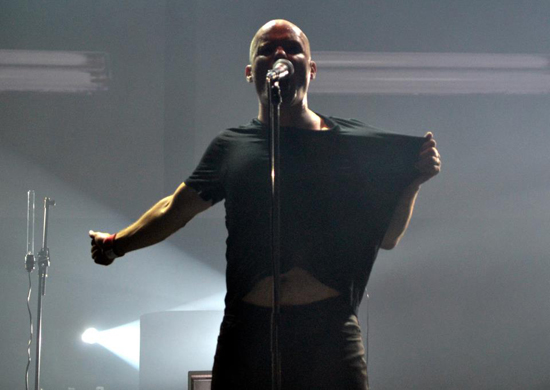

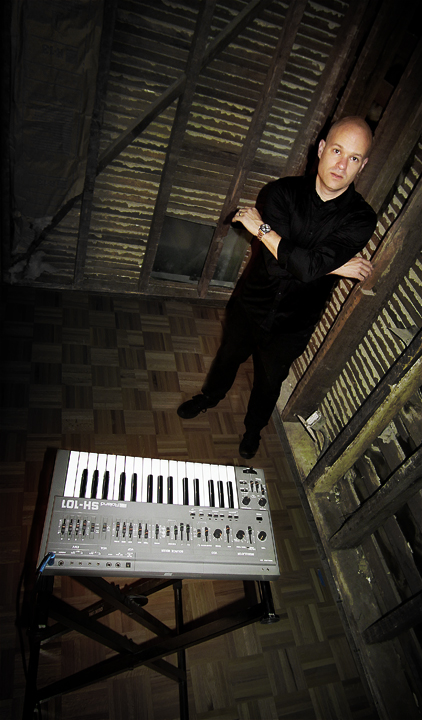
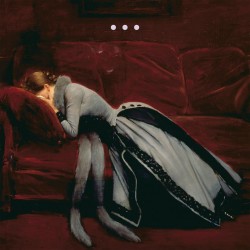
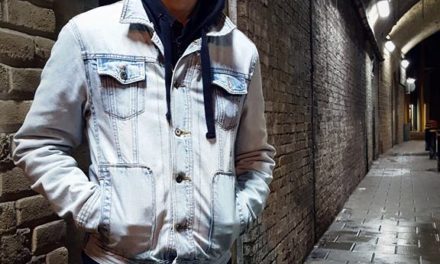
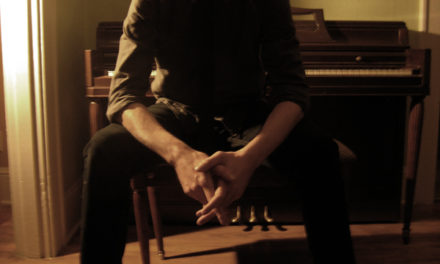

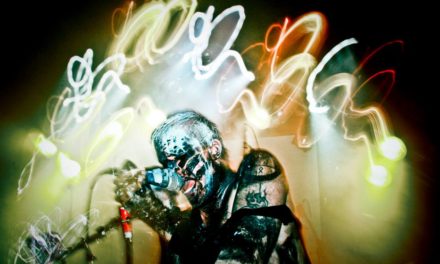
Trackbacks/Pingbacks